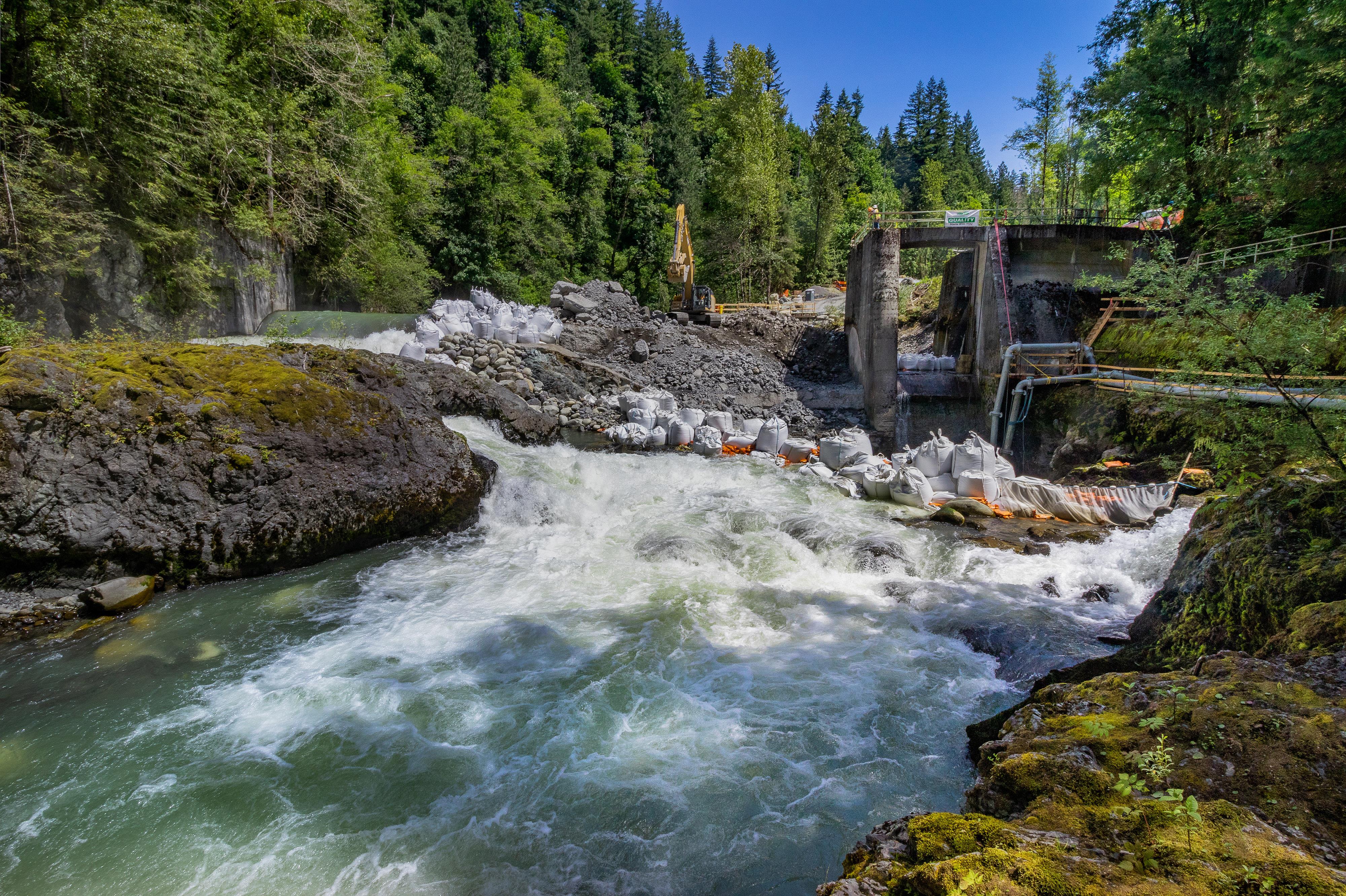Bringing the Middle Fork Nooksack River back to life

Cold, clean water running through a heavily forested canyon. Eagles flying overhead. Salmon — lots of them — leaping through newly accessible bends in the river. That’s the future of a free-flowing Middle Fork Nooksack now that American Rivers and our partners have removed a dam that choked this Washington river for 60 years.
The Nooksack flows from glaciers on Mt. Baker through northwest Washington’s forests, farms and towns before emptying into Bellingham Bay and Puget Sound. Before non-native settlers arrived, the Nooksack Indian Tribe had intimate knowledge and use of the Nooksack River. Historically, the Middle Fork was a place for hunting, gathering, solitude and spiritual practice. The people of Nooksack and their descendants see the area as part of their cultural identity and wish to continue their traditional practices.
Built in 1961 to supplement the city of Bellingham’s water supply, the Middle Fork Nooksack Dam was built without any way for migrating fish to pass through and swim upstream. This lack of access to breeding grounds decimated salmon populations and harmed the cultures and livelihoods of Pacific Northwest tribes. Chinook salmon are also the primary food source for Southern Resident orcas in Puget Sound. Without enough salmon to eat, orcas are starving and approaching extinction.
Dams can benefit society, but they also cause considerable harm to rivers. Dams have depleted fisheries, degraded river ecosystems, and altered recreational opportunities on nearly all of our nation’s rivers. The U.S. Army Corps of Engineers has catalogued at least 90,000 dams that are blocking our rivers and streams. Many are now old, unsafe or no longer serving their intended purposes.
The good news: A river starts coming back to life almost immediately after a dam is removed. American Rivers has seen this time and time again: On Maine’s Kennebec and Penosbscot rivers, Maryland’s Patapsco River, Pennsylvania’s Susquehanna River, and Washington’s Elwha River — the site of the largest river restoration in history.
In the Pacific Northwest, the best way to recover salmon — and the restore the health of orcas and more than 130 species that rely on salmon — is by removing dams like the one on the Middle Fork Nooksack so that migrating fish can once again breed freely.
In fact, the Nooksack Indian Tribe advocated to remove the dam for decades.
“We want to see the salmon return and continue protecting a resource that has always been there for our people,” says Trevor Delgado, Nooksack tribal historic preservation officer. “The Middle Fork dam removal project is a representation of decades of work and provides an opportunity to work together collaboratively to protect an area that is deeply rooted to our culture. What the Middle Fork means for our people today, we want it to mean the same for future generations. We want to continue to pass on the bridge from our ancestors into the future.”
The result of years of partnership between American Rivers, the city of Bellingham, the Nooksack Indian Tribe and others, the Middle Fork Nooksack Dam was blown up in July 2020, opening 16 miles of critical habitat to steelhead, bull trout and Chinook salmon — without compromising Bellingham’s water supply.
“With this project, we’re reimagining the type of infrastructure our communities need to thrive. We can restore a healthy, free-flowing river in a way that revitalizes our environment and benefits our communities,” says April McEwen, who led the project for American Rivers.
The need to remove harmful, outdated and unsafe dams is more important than ever. Climate change is putting unprecedented stress on our rivers, with increasing floods threatening potentially deadly dam failures. Elsewhere, soaring temperatures and diminishing flows make the clean, cold waters of free-flowing rivers essential if we are to protect fish, wildlife, and the biodiversity vital to native ecosystems.
Thanks to the generosity of donors across the country, American Rivers has removed or influenced 95 percent of the more than 1,700 dams torn down across the country since 1999. And we’re accelerating the pace by training and advising other groups on how to undertake their own dam removals.
Next up for Pacific Northwest salmon: Urgent action is needed to remove four federal dams on Washington’s lower Snake River to save endangered salmon and honor treaties with Native American tribes.
We know dam removal works. It revitalizes fish and wildlife, reconnects communities to their rivers, improves public safety and enhances recreation. That’s why we’re going to keep pushing hard to remove harmful, outdated and unsafe dams nationwide. Because we need healthy rivers, and healthy rivers need to run free.